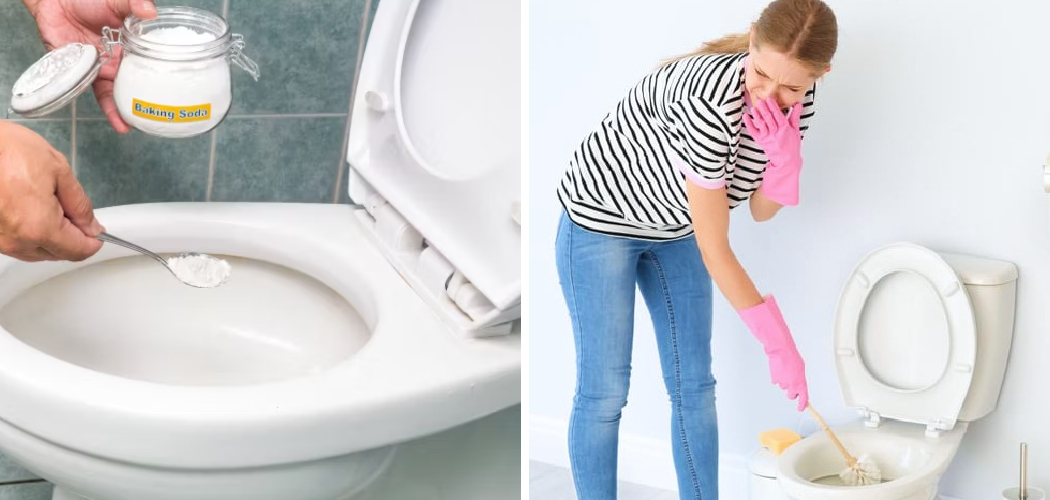Are you tired of your bathroom’s musty, unpleasant smell that just won’t go away? Chances are, you have a mold problem. Mold thrives in warm, damp environments and can easily set up shop in bathrooms with poor ventilation. It is unsightly and smelly, and mold can pose health risks to you and your family.
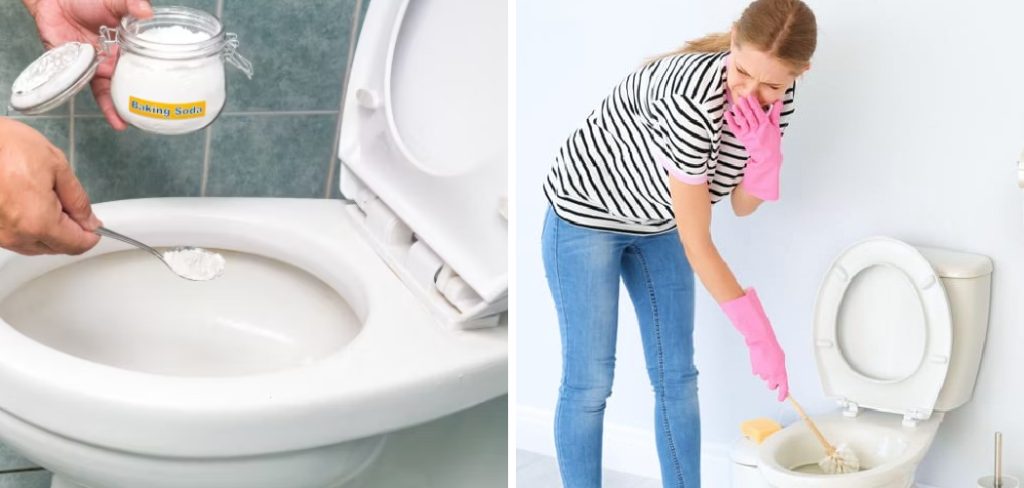
A moldy smell in the bathroom is unpleasant and can indicate the presence of mold, which can have adverse health effects. Tackling this issue promptly is crucial to maintaining a clean and healthy environment.
This guide will provide you with effective and practical steps on how to get rid of moldy smell in bathroom. From identifying the source of the smell to using natural and commercial cleaning solutions, we’ll cover a range of strategies to help you keep your bathroom fresh and mold-free.
What are the Benefits of Removing Moldy Smell?
Before diving into the steps to get rid of a moldy smell, let’s quickly discuss why it’s important. Apart from improving the overall air quality and making your bathroom more pleasant to use, here are some other benefits of eliminating mold in your bathroom:
- Prevents Health Risks: Mold can trigger allergies and respiratory problems, especially in vulnerable individuals such as children and those with respiratory conditions. Eliminating the cause of moldy smell can significantly reduce these risks.
- Preserves Structural Integrity: Mold thrives on organic materials like wood and drywall, which are often used in bathroom construction. Over time, mold growth can weaken these materials, leading to costly repairs or replacements.
- Maintains Cleanliness: Moldy smells are often accompanied by visible black or green spots, which can make your bathroom look dirty and unhygienic. Keeping mold at bay will help you maintain a clean and inviting space.
Now that we understand the importance of getting rid of a moldy smell let’s move on to the steps you can take to tackle this issue.
What Will You Need?
To effectively eliminate the moldy smell in your bathroom, you’ll need some basic supplies:
- Rubber gloves
- Protective eyewear
- Face mask (especially if you have a sensitivity to mold)
- Bleach or other cleaning solution
- Vinegar
- Baking soda
- Scrub brush or sponge
Once you have these supplies, you’re ready to begin the process of removing the moldy smell in your bathroom.
10 Easy Steps on How to Get Rid of Moldy Smell in Bathroom
Step 1: Identify and Address the Source
Before eliminating the odor, it’s crucial to identify and address the root cause of the problem. In most cases, mold growth causes a moldy smell. Check for visible signs of mold on walls, floors, and ceilings. Common places for mold growth in bathrooms include corners, around the shower or bathtub, and on grout lines.
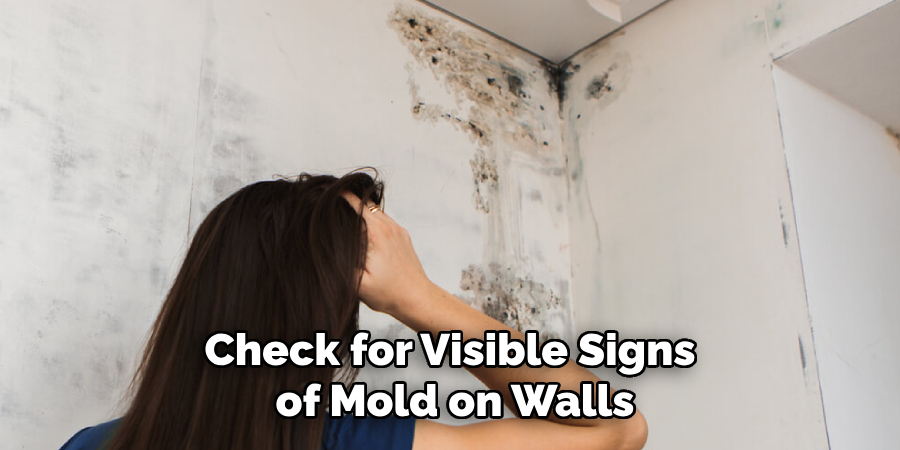
If you find mold, addressing it before attempting to remove the smell is essential. Use a water and bleach solution (1 cup of bleach per gallon of water) to scrub away any visible mold. Make sure to wear protective gear and ventilate the area properly while doing this.
Step 2: Clean and Dry Surfaces
After removing any visible mold, it’s important to thoroughly clean and dry all surfaces in your bathroom.
This will help prevent further mold growth. Use a commercial cleaning solution or a mixture of vinegar and water (1 part vinegar to 2 parts water) to wipe down all surfaces, including walls, floors, and fixtures. Don’t forget to clean any objects in your bathroom, such as toothbrush holders or shower curtains.
Once everything is cleaned, make sure to thoroughly dry all surfaces using a towel or fan. Moisture is a main factor contributing to mold growth, so this step is crucial in preventing future odors.
Step 3: Use Baking Soda to Absorb Odors
Baking soda is a natural deodorizer that can effectively absorb lingering moldy smells. Sprinkle a generous amount of baking soda on damp areas or places with the most concentrated smell.
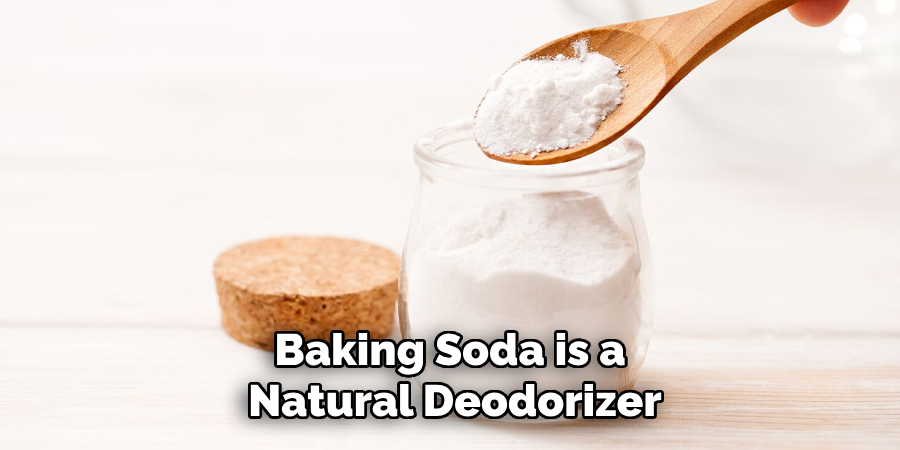
Let it sit for several hours or overnight to absorb the odors. Afterward, vacuum or sweep up the baking soda and dispose of it properly. This step helps neutralize any remaining odors and leaves your bathroom smelling fresh.
Step 4: Ensure Proper Ventilation
Proper ventilation is crucial in preventing mold growth and the return of musty odors. Ensure your bathroom is well-ventilated by opening windows, using exhaust fans, or installing a dehumidifier.
After showering or bathing, keep the windows or exhaust fan running to help reduce humidity levels. Continuous airflow and reduced moisture will create an environment that is less conducive to mold growth, helping to keep odors at bay.
Step 5: Use Activated Charcoal
Activated charcoal is an excellent absorbent and can efficiently remove stubborn, moldy odors. Place a few bags of activated charcoal in different corners of your bathroom, especially in areas that are prone to dampness, such as under the sink or near the shower. Activated charcoal works by trapping and neutralizing odor-causing particles in the air.
Replace the bags every few weeks for maximum effectiveness. This simple step can dramatically improve the air quality in your bathroom and keep it smelling fresh.
Step 6: Inspect and Fix Leaks
Hidden leaks can create a continuously damp environment in your bathroom, making it a prime area for mold growth and persistent odors.
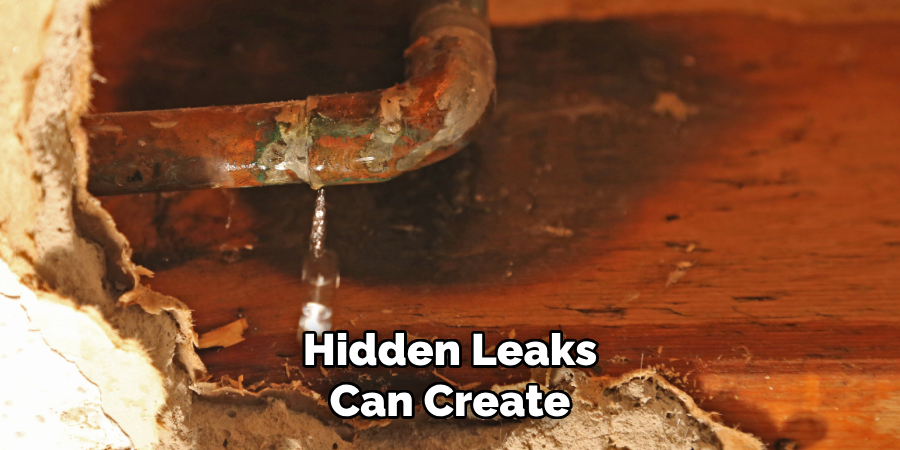
Regularly inspect your bathroom plumbing, including under sinks, around the toilet, and behind the shower or bathtub. Look for signs of leaks, such as discoloration, water stains, or puddles.
If you identify any leaks, repair them immediately either by tightening connections, sealing joints with a waterproof sealant, or calling a professional plumber for more significant repairs. Fixing these leaks promptly will reduce moisture levels and help prevent mold infestations.
Step 7: Replace Moldy Materials
In cases where mold has deeply penetrated materials such as drywall, caulking, or grout, it may be necessary to replace these materials altogether to permanently remove the moldy smell. Remove and properly dispose of the affected areas, replacing them with mold-resistant materials if possible.
When re-caulking or re-grouting, use products that contain mold inhibitors to reduce the likelihood of future mold growth. This step ensures that your bathroom remains a healthy and pleasant environment.
Step 8: Use an Air Purifier
Investing in a high-quality air purifier can significantly help eliminate lingering mold spores and improve overall air quality in your bathroom.
Choose an air purifier with a HEPA filter, as it effectively captures tiny mold spores and other allergens. Place the air purifier in your bathroom and run it regularly, especially after cleaning or when the humidity level is high.
An air purifier helps reduce moldy odors and contributes to a healthier indoor environment by removing other pollutants and irritants from the air.
Step 9: Use Essential Oils
Essential oils such as tea tree oil, eucalyptus, or lavender have natural antifungal properties and can also leave your bathroom smelling pleasant.

Mix a few drops of essential oil with water in a spray bottle and lightly mist surfaces in your bathroom, focusing on areas prone to dampness or mold growth.
You can also add a few drops of essential oil to your cleaning solutions to boost mold-fighting power. Not only will essential oils help discourage mold regrowth, but they will also infuse your bathroom with fresh, invigorating scents.
Step 10: Regular Maintenance and Cleaning
Implement a regular maintenance and cleaning routine to ensure that your bathroom remains mold-free and smells fresh. At least once a week, wipe down all surfaces, including countertops, tiles, and fixtures, with a mold-inhibiting cleaner.
Pay special attention to areas prone to dampness, such as the shower, bathtub, and around sinks. Regularly wash or replace items like shower curtains, bath mats, and towels that can retain moisture and
become breeding grounds for mold. By consistently maintaining a clean and dry bathroom environment, you can significantly reduce the risk of mold growth and keep unpleasant odors at bay.
By following these steps, your bathroom will be free of musty odors and a healthier and more pleasant space for you to enjoy.
5 Additional Tips and Tricks
- Use White Vinegar: White vinegar is a natural deodorizer and cleaner. Spray undiluted white vinegar directly on mold-prone areas and let it sit for about an hour before wiping it off with a damp cloth. This helps to eliminate mold and its odor.
- Improve Ventilation: Ensuring proper airflow in your bathroom can significantly reduce mold growth. Use exhaust fans during and after showers or open windows if possible to allow moisture to escape and keep the air dry.
- Install a Bathroom Dehumidifier: A dehumidifier can help control the moisture level in your bathroom, making it less conducive to mold growth. Regularly empty the water reservoir and clean the filter per the manufacturer’s instructions.
- Replace Shower Curtains and Liners: Over time, shower curtains and liners can become a breeding ground for mold and mildew. Regularly wash or replace them to keep mold at bay. Consider using mold-resistant shower liners for better prevention.
- Keep Surfaces Dry: Wipe down wet surfaces such as the shower walls and floor with a dry towel after using the bathroom. This helps to remove excess moisture and prevent mold growth.
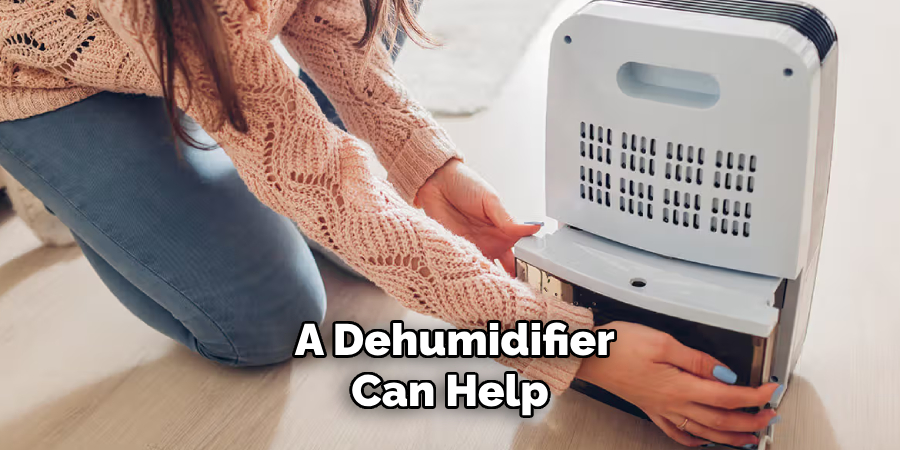
With these additional tips and tricks, you can further prevent mold growth in your bathroom. Remember to regularly inspect and clean your bathroom for any signs of mold, and take immediate action if you spot any.
5 Things You Should Avoid
- Ignoring Leaks: Small leaks in your bathroom can create damp conditions that are perfect for mold to thrive. Avoid ignoring any leaks, whether they’re from your plumbing fixtures, pipes, or tiles, and fix them as soon as possible to prevent mold growth.
- Using Ammonia Products: Avoid using ammonia-based cleaning products to tackle mold. Ammonia does not kill mold spores and can actually make the mold problem worse. Mixing ammonia with bleach can also produce toxic fumes that are hazardous to your health.
- Carpeting Your Bathroom: Carpets in bathrooms can retain moisture and create an ideal environment for mold to grow. Avoid carpeting your bathroom; instead, opt for tiles, vinyl, or other moisture-resistant flooring options that are easier to clean and dry.
- Overlooking Hidden Spots: Mold can grow in hidden areas such as behind the toilet, under the sink, or within grout lines. Avoid overlooking these spots during your cleaning routine. Regularly inspect and clean all nooks and crannies to keep mold at bay.
- Neglecting Exhaust Fan Maintenance: An exhaust fan is crucial for keeping your bathroom ventilated, but it won’t be effective if it’s clogged or broken. Avoid neglecting the maintenance of your exhaust fan. Clean or replace the filter as needed and ensure it functions properly to remove excess moisture from the air.
By avoiding these things, you can reduce the risk of mold growth in your bathroom and maintain a clean and healthy space.
What are the Causes of Mold in Bathrooms?
Mold thrives in warm, moist environments, making bathrooms a prime location for its growth. The most common causes of mold in bathrooms include:
- Poor Ventilation: Without proper airflow, moisture can accumulate and create a damp environment that promotes mold growth.
- Leaks: Any leaks from plumbing fixtures or pipes can create dampness and provide the perfect conditions for mold to grow.
- Lingering Moisture: Leaving wet towels or bathmats on the floor, not wiping down surfaces after use, and not fixing leaks promptly can all contribute to lingering moisture in your bathroom.
- Lack of Natural Light: Mold thrives in dark areas with limited sunlight. If your bathroom has no windows or gets very little natural light, it may be more susceptible to mold growth.
- Lack of Cleaning: Regularly cleaning your bathroom helps to remove any mold spores before they have a chance to grow and spread. Neglecting regular cleaning can lead to a buildup of mold over time.
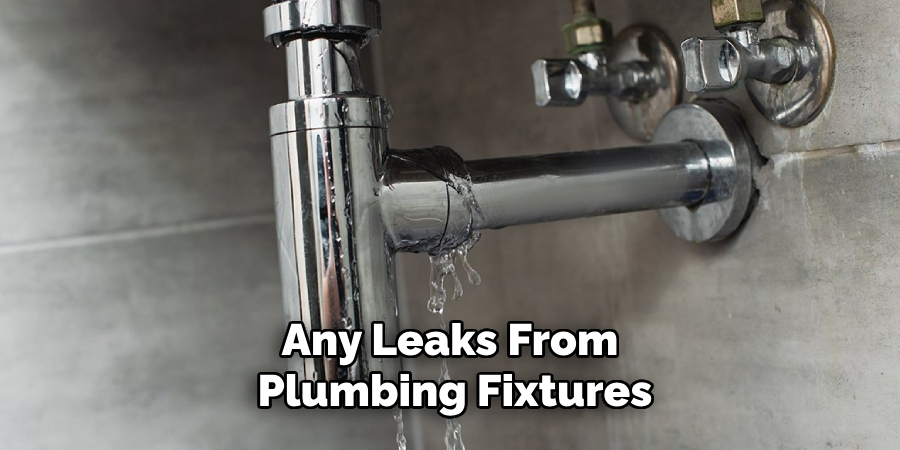
To prevent mold in your bathroom, it’s essential to address these underlying causes and take the necessary measures to control moisture and maintain proper ventilation. Overall, keeping your bathroom clean, dry, and well-ventilated is key to preventing mold growth.
Why Does Your Bathroom Smell Bad Even Though It’s Clean?
There are several reasons why your bathroom may have a bad odor, even if it appears clean. Some possible causes include:
- Mold or Mildew Growth: As mentioned earlier, mold loves warm and damp environments, making bathrooms a prime location for growth. Even if you don’t see visible mold, the presence of its spores can cause a musty smell in your bathroom.
- Clogged Drains or Pipes: Hair, soap scum, and other debris can build up in your drains and cause unpleasant odors. Regularly cleaning your drains can help prevent this issue.
- Dirty Toilet Bowl or Tank: Even if you clean your toilet regularly, a dirty bowl or tank can contribute to bad smells in the bathroom. Use a toilet cleaner to remove any buildup and flush with baking soda and vinegar for a natural deodorizing solution.
- Sewer Gas Leak: If you notice a rotten egg smell in your bathroom, it could be due to a sewer gas leak. This potentially dangerous issue requires immediate attention from a professional plumber.
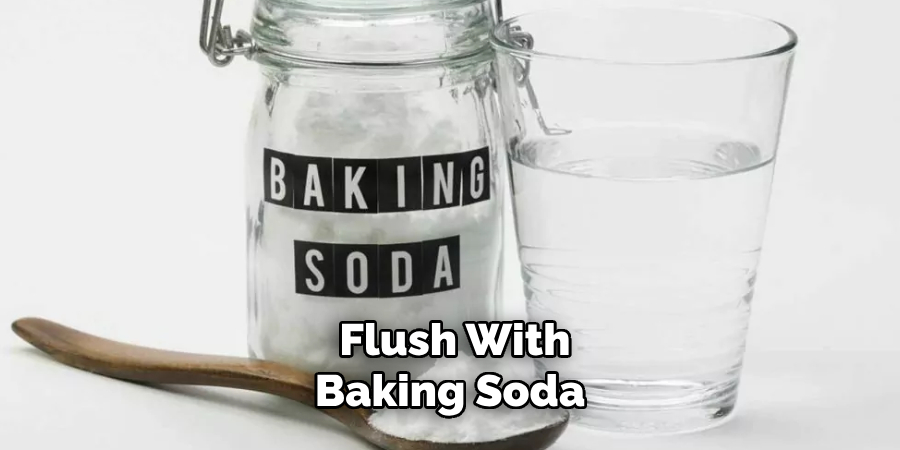
Regular cleaning and maintenance can help prevent bad smells in your bathroom. If the smell persists despite your best efforts, it’s best to address any potential underlying issues and seek professional assistance if needed. Maintaining a clean and well-ventilated bathroom is key to preventing mold growth and unpleasant odors.
What Chemicals Can Be Used to Kill Mold?
There are several chemicals that can effectively kill mold. These include:
- Bleach: Bleach is a common household disinfectant that can kill mold on non-porous surfaces like tiles, bathtubs, and sinks. Mix 1 cup of bleach with 1 gallon of water and apply the solution to the affected area. Let it sit for 15 minutes before rinsing and drying the surface.
- Vinegar: Distilled white vinegar is a natural and affordable alternative to bleach. Its acidic properties can kill mold on non-porous surfaces. Simply spray undiluted vinegar onto the affected area, let it sit for an hour, then wipe away with a damp cloth.
- Hydrogen Peroxide: Hydrogen peroxide is another natural and effective mold killer. Mix equal parts of 3% hydrogen peroxide and water, apply to the affected area, let it sit for 10 minutes, then wipe clean.
It’s important to remember that these chemicals should be used with caution and proper protective gear as they can be harmful if ingested or come into contact with skin.
If you have a large mold problem or are unsure about using these chemicals, it’s best to consult a professional for help. Keeping your bathroom clean, dry, and well-ventilated can help prevent the need for harsh chemicals in the first place.
Conclusion
In conclusion, how to get rid of moldy smell in bathroom involves a combination of regular cleaning, proper ventilation, and addressing any underlying issues that contribute to moisture buildup.
Start with maintaining a consistent cleaning routine that targets all surfaces, especially hidden spots where mold can thrive.
Ensure your exhaust fan is in good working order to keep the air circulation optimal and don’t overlook the importance of wiping down wet surfaces after use. Additionally, natural mold-killing agents like vinegar or hydrogen peroxide can be effective and safe for routine maintenance.
You can enjoy a fresh, clean, and mold-free bathroom environment by proactively managing these factors.

